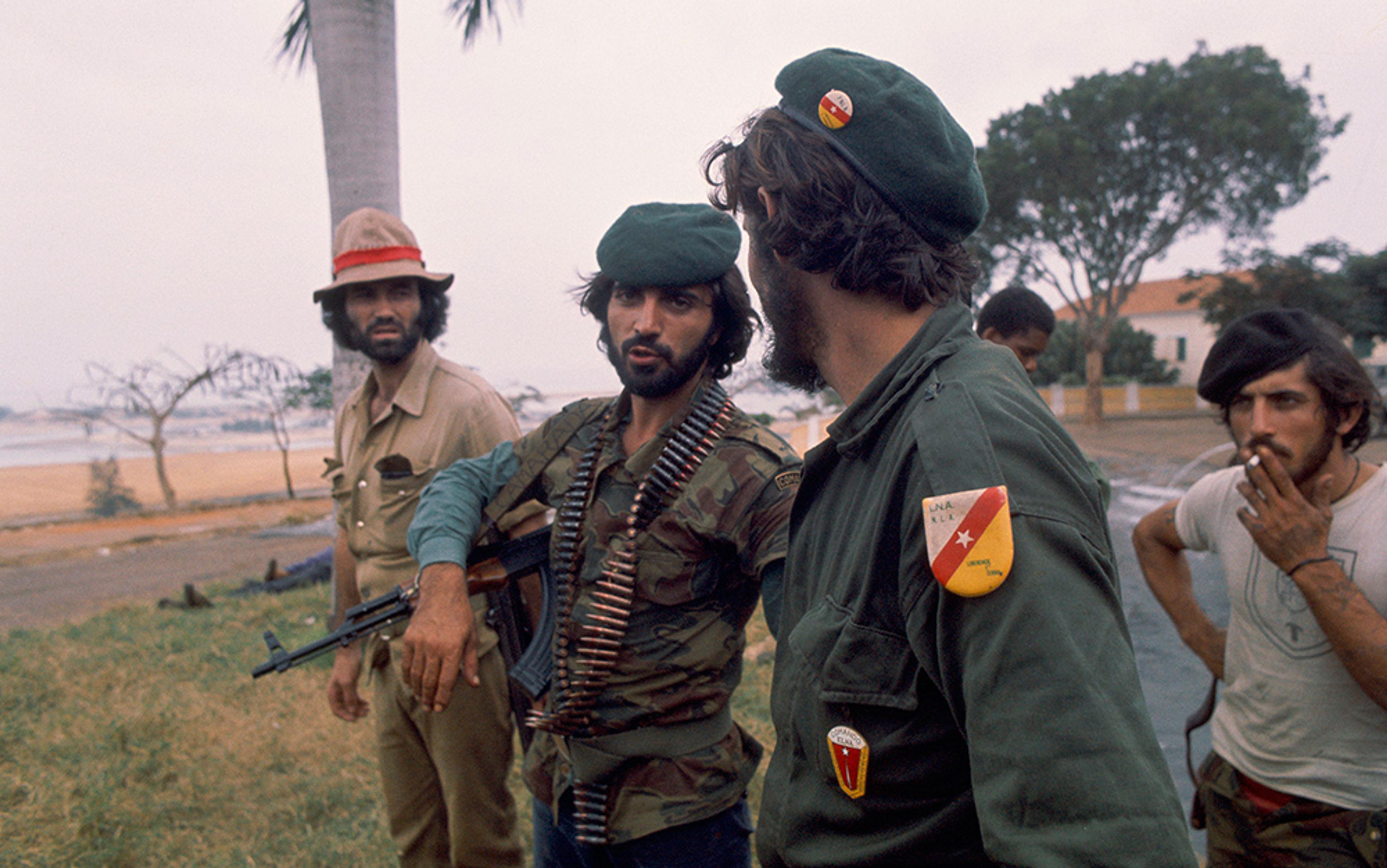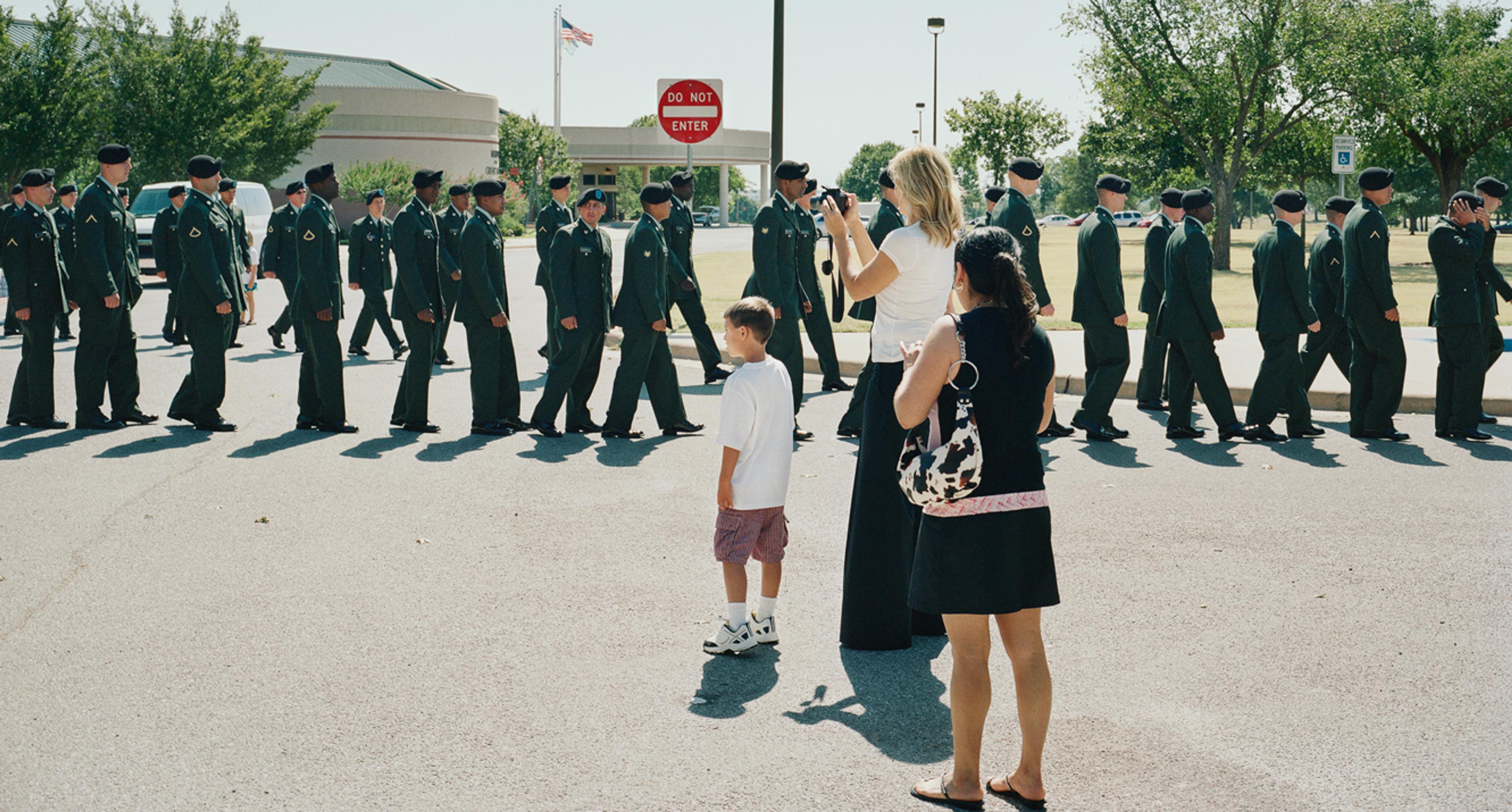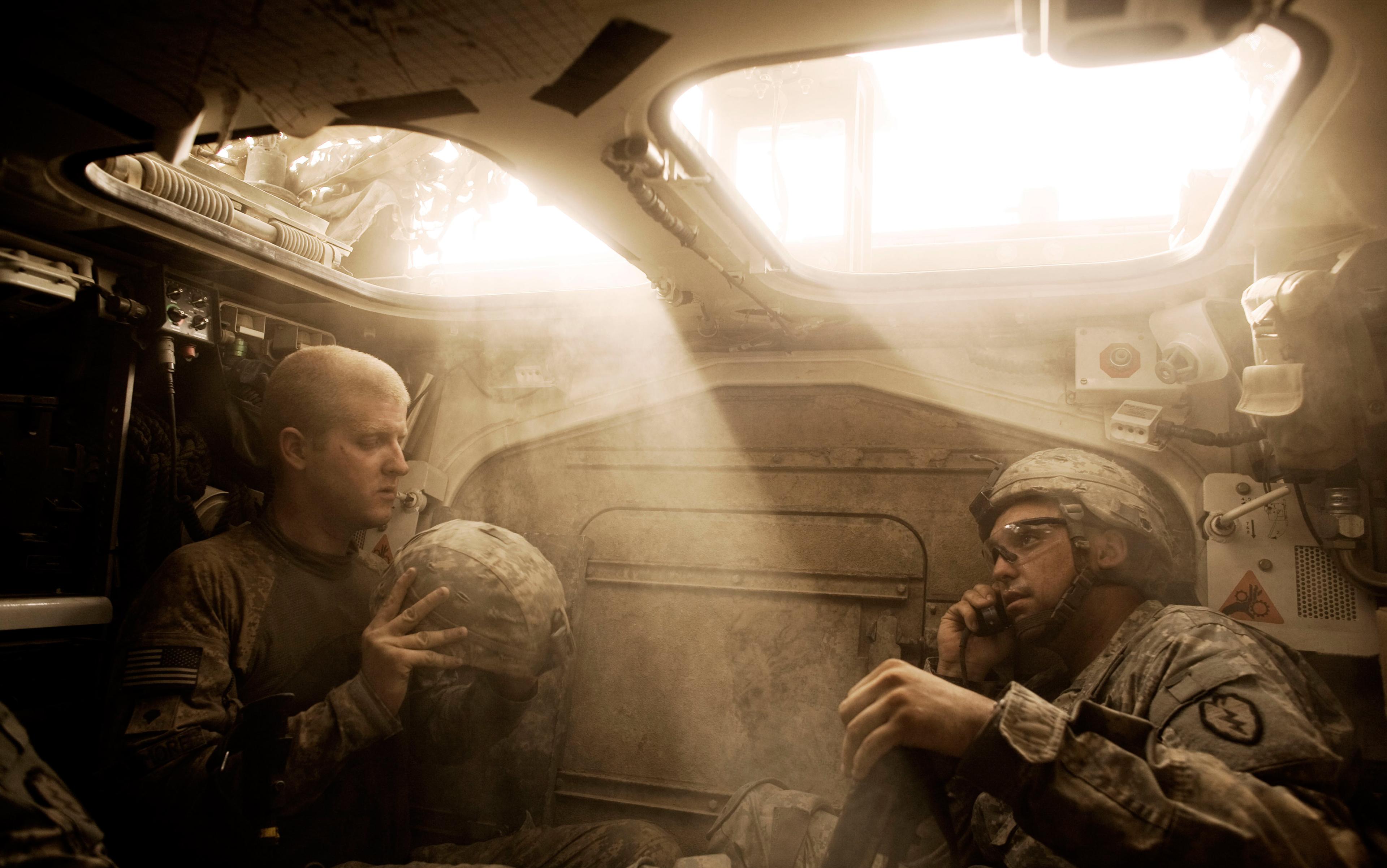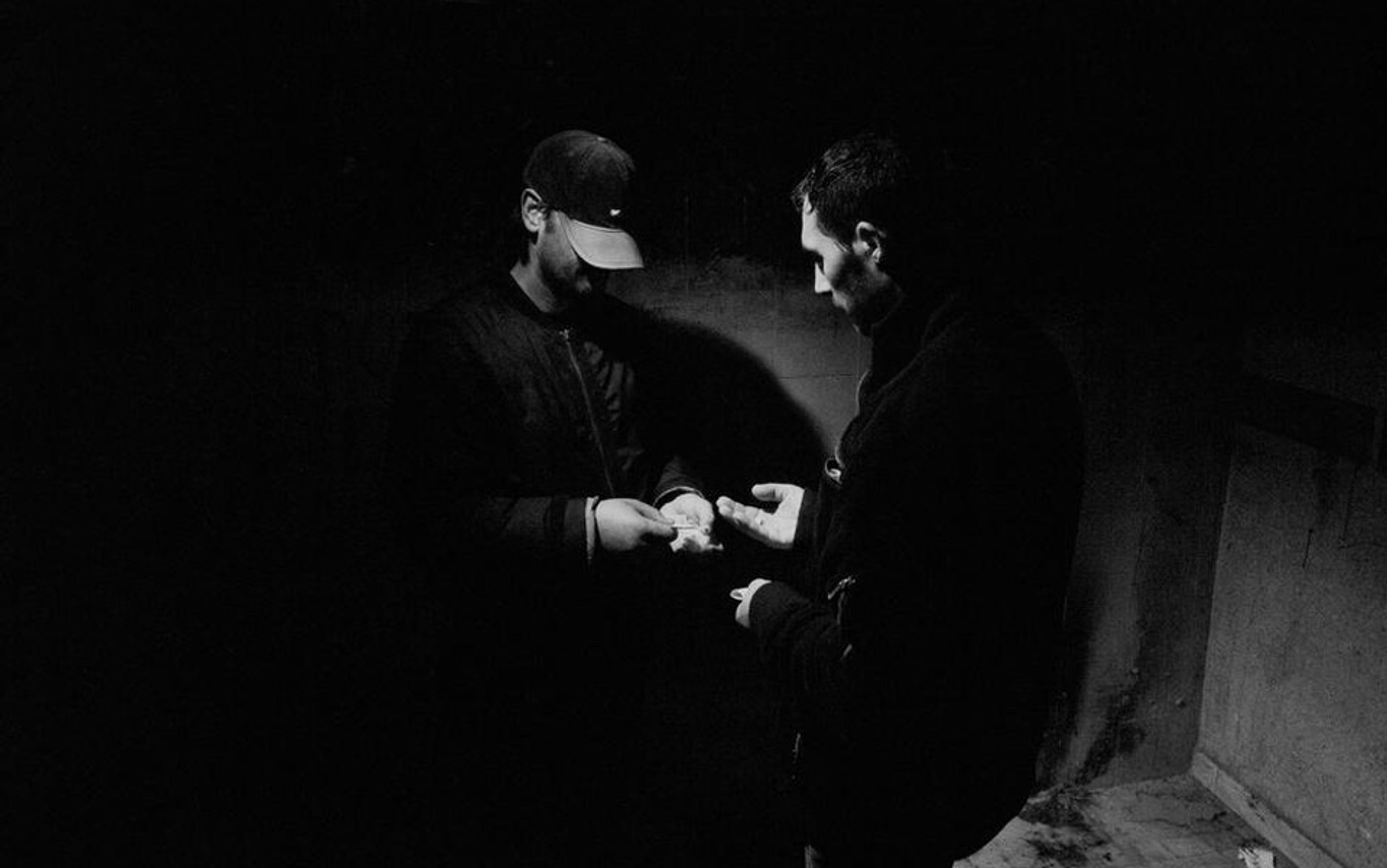It is a familiar story. A superpower goes to war and faces a stronger-than-expected insurgency in distant lands, yet has insufficient forces to counter it because of political and military constraints. The superpower decides to hire contractors, some of whom are armed, to support its war effort. The armed contractors prove to be both a blessing and a curse, providing vital security services to the campaign, yet at times killing innocent civilians, causing strategic setbacks, and damaging the superpower’s legitimacy. Without these contractors, the superpower could not wage the war. With them, it is more difficult to win.
The armed contractors in question are not in Iraq or Afghanistan but in northern Italy, and the year is not 2007 but 1377. The superpower is not the United States but the papacy under Pope Gregory XI, fighting the antipapal league led by the duchy of Milan. The tragic killing of civilians by armed contractors did not occur in Baghdad but in Cesena, 630 years earlier. The military companies employed were not DynCorp International, Triple Canopy or Blackwater, but the Company of the Star, the Company of the Hat and the White Company. Known as free companies, these for-profit warriors were organised as corporations, with a well-articulated hierarchy of subcommanders and administrative machinery that oversaw the fair distribution of loot according to employees’ contracts. CEO-like captains led these medieval military corporations.
The parallels between medieval and contemporary private military companies (PMCs) are strong. Today, the US and many others hire contractors to fulfil security-related contracts in the world’s most dangerous places. In the late Middle Ages, such men were called condottieri – literally, ‘contractors’ – who agreed to perform security services described in written contracts, or condotte. Both modern and medieval contractors were organised as companies, their services available to the highest or most powerful bidder for profit. Both filled their ranks with professional men of arms drawn from different countries and loyal primarily to the paycheck. Both have functioned as private armies, usually offering land-based combat skills rather than naval (or aerial) capabilities and deploying force in a military manner rather than as law enforcement or police.
Mercenaries are back. Once brandished as villainous outlaws, they are emerging from the shadows to once again become a mainstream instrument of world politics. The United Arab Emirates (UAE) has hired hundreds of Latin-American mercenaries to fight the Iranian-backed Houthis in Yemen. After years of struggling against Boko Haram, Nigeria finally employed mercenaries to do the job, and they did. Russia’s President Vladimir Putin has sent mercs to ‘liberate’ eastern Ukraine, a conflict that still simmers. Mercs are reportedly working in parts of Iraq.
States are not the only consumers in the market for force. The extractive industry and humanitarian organisations hire mercs to protect their people and their assets in the world’s most dangerous places. Arsenal ships full of armed contractors act as privateers in the Gulf of Oman and other pirate-infested waters. Mercenaries stalk cyberspace as ‘hack-back companies’: cybermercs who will hack those who hack their clients, deterring hackers in the first place. In 2008, the actress Mia Farrow considered hiring Blackwater to stage a humanitarian intervention in Darfur to end the genocide there. Some, such as Malcolm Hugh in Privatising Peace (2009), think that mercenaries should augment thinning United Nations peacekeeping forces, an argument with some merit. Others have suggested that the international community use them to defeat Daesh/ISIS, and the super-rich have toyed with the possibility of using mercenaries for their own purposes.
Mercenaries fight primarily for profit rather than politics or patriotism. The word ‘mercenary’ comes from the Latin merces (‘wages’ or ‘pay’); today, it connotes vileness, treachery and murder. But it was not always so. For much of history, being a mercenary was considered an honest albeit bloody trade, and employing mercenaries to fight wars was routine: there was King Shulgi of Ur’s army (2094-2047 BC); Xenophon’s army of Greek mercenaries known as the Ten Thousand (401-399 BC); and Carthage’s mercenary armies in the Punic Wars against Rome (264-146 BC), including Hannibal’s 60,000-strong army, which marched elephants over the Alps to attack Rome from the north. When Alexander invaded Asia in 334 BC, his army included 5,000 foreign mercenaries, and the Persian army that faced him contained 10,000 Greeks.
Rome relied on mercenaries throughout its 1,000-year reign, and Julius Caesar was saved at Alesia by mounted German mercenaries in his war against Vercingetorix in Gaul. Nearly half of William the Conqueror’s army in the 11th century was made up of mercenaries, as he could not afford a large standing army, and there were not enough nobles and knights to accomplish the Norman conquest of England. In Egypt and Syria, the Mamluk sultanate (1250-1517) was a regime of mercenary slaves who had been converted to Islam. From the late 10th to the early 15th centuries, Byzantine emperors surrounded themselves with Norse mercenaries, the Varangian Guard, who were known for their fierce loyalty, prowess with the battle axe, and ability to swill copious amounts of alcohol. In Europe, the Italian condottieri, the German landsknechts, as well as Swiss companies, Bretons, Gascons, Picards and other mercenaries dominated warfare from the 13th to the 16th centuries. For at least 3,000 years, private military force has been a feature – often the major feature – of warfare.
War began to change in the 16th century, transforming private warfare with it. European battles became increasingly violent as armies grew larger, weapons more destructive, and consequences more grave. During the Thirty Years’ War (1618-1648), for example, major engagements typically involved 50,000 combatants, as evidenced by the battles of White Mountain (1620), Breitenfeld (1631), Lützen (1632), Nördlingen (1634), Wittstock (1636), and Rocroi (1643). Armies were an amalgamation of mercenaries with a minority of national troops. Patriotism was unconnected to military service.
To meet the rising demand for troops, a new breed of conflict entrepreneur emerged – ‘military enterprisers’ – who outfitted regiments and leased them to those in need of martial services. Distinct from mercenaries, military enterprisers raised entire armies. These ‘rental regiments’ or contractor armies allowed rulers to wage war on a grand scale without undue administrative or fiscal reform, effectively lowering the barrier to entry in war and encouraging ever-larger battles. Examples of the greatest military enterprisers include Count Ernst von Mansfeld, who raised an entire army for the Elector Palatine; the Amsterdam businessman Louis de Geer, who sourced a navy for Sweden; the Genovese Marquis of Spinola, who managed the King of Spain’s military affairs in the Netherlands; and Bernard von Weimar, who produced armies for Sweden and then France. Most famously, Count Albrecht von Wallenstein generated a massive army for the Holy Roman Emperor Ferdinand II, and became the richest man in Europe. By the end of the war, the market had moved beyond oligarchs such as Wallenstein to smaller actors, such as mercenary colonels and merchant financiers, empowered by credit and supply networks based in Amsterdam, Hamburg and Genoa.
When business was slow, mercenaries pillaged the countryside until they were hired by a client or paid to go away. A free market for force incentivises war
Military enterprisers were a hybrid of both. Like mercenaries, they are private-sector actors involved in armed conflict and motivated chiefly by profit. Unlike mercenaries, they typically worked in monogamous public-private partnerships with a government client to build armies rather than command them. Enterprisers are military public-private partnerships, blending the profit motive of mercenaries with the loyalty of national armies.
Military enterprisers changed the business of war, transforming it from a free to a mediated market for force. In a free market, conflict is commoditised: consumers and suppliers of warfare seek each other out, negotiate a price, and wage war. Both sides of the bargain were generally unconstrained, and the marketplace was laissez-faire in nature. For example, mercenaries such as the condottieri often worked for the highest bidder, changed sides when it suited their purses, sought wars out, and occasionally started them. When business was slow, they often pillaged the countryside until they were hired by a client or paid to go away. A free market for force incentivises war.
This contrasts with a mediated market with military enterprisers, which imbued a modicum of restraint into force providers and their patrons. Long-term and exclusive public-private partnerships aligned the interests of both parties, making it harder for either side to defect, and infusing stability into the marketplace. For example, Wallenstein had no incentive to betray Ferdinand II. On the contrary, the ruler was his main source of revenue. Nor was Ferdinand II motivated to break his contract with Wallenstein, as the enterpriser was his primary supplier of armed forces during a war of survival. In other words, they were codependent in ways that medieval mercenaries and their clientele were not. Such relationships had existed in the past, but by Wallenstein’s time, they were dominant. The presence of shared, long-term interests restrained corrupt behaviours and therefore mediated the market for force.
The transition from private to public armies was gradual, spanning centuries, as states consolidated their power in European politics. By 1650, it was clear that on-demand military services were no longer economical to rulers, given the destruction that mercenaries wrought upon the countryside and the threat they posed to their employers. What was needed was a public army of systematically trained and disciplined professionals, maintained in peace and war, winter and summer, with a regular means of obtaining supplies and replacements. Critically, this military force would be paid by, and loyal to, the state.
For example, following the Peace of the Pyrenees (1659), France formed a standing army by absorbing most of Louis XIV’s officers into the gendarmerie and establishing six standing infantry units. These regiments enabled the Sun King to mobilise his armies swiftly in the War of Devolution (1667-1668) and overrun the Habsburg-controlled Spanish Netherlands and the Franche-Comté region of eastern France. Louis XIV in turn created an even larger standing army at the end of the war. At the same time, in England, with his New Model Army, Oliver Cromwell was creating a prototype standing army. After the Restoration of 1660, Charles II was permitted to retain five regiments from this force, totalling about 3,000 men. These relatively small specialty forces were the beginning of the large national militaries that would develop over the following centuries.
‘Prussia was not a country with an army, but an army with a country’
In the three subsequent centuries, states continued to squeeze out mercenaries. Gunpowder hurt them too, as it devalued the mercenaries’ skill, allowing peasants to defeat them. Growing state bureaucracies made it possible to administer large standing militaries and to collect the taxes to maintain them. Enlightenment ideas and their accompanying political revolutions also spurred the demise of private armies by strengthening the bond between soldier and state. The ‘social contract’, levée en masse, the Napoleonic reforms, the rise of nationalism and other ideas encouraged military ‘service’ as a core patriotic duty. This norm pervades public armies today. By the end of the 18th century, national armies were so large that Minister Friedrich von Schrötter remarked: ‘Prussia was not a country with an army, but an army with a country.’
Over time, the state became the principal market actor for force and outlawed the competition, such as mercenaries. The only exception to this was for states that wished to ‘rent’ their armies to other states for a profit. During the American Revolutionary War, Great Britain doubled its army by hiring nearly 30,000 soldiers from German states, mostly from Hesse-Kassel, to quell the colonial revolt. The American rebels called these German soldiers Hessians.
Similarly, although piracy was illegal and, if caught, pirates faced the gallows, states hired private warships, or privateers, by issuing a letter of marque to attack enemy ships. Privateers were allowed to pilfer as part of the prize. The line between piracy and privateering was thin. Acts of piracy were deemed illegal because, as a 19th-century jurist explained, they were ‘done under conditions which render it impossible or unfair to hold any state responsible for their commission’. By 1856, with nationalism on the rise, the Paris Declaration Respecting Maritime Law abolished privateering.
States also delegated military affairs to quasi-state-run trading companies such as the Dutch or British East India Companies, which commanded their own armed forces. But the last time a state raised an army of foreigners was during the Crimean War in 1854, when Great Britain hired 16,500 mercenaries.
In the 20th century, state power rose to its zenith and pushed the free market for force underground. The period’s great conflicts – the First and Second world wars, the Cold War – were waged between ‘great power’ nations using huge public militaries. The presumption that only states can legitimately wage war is taken for granted in international relations theory and codified in the ‘laws of war’, which regulate only interstate warfare, ignoring armed non-state actors. In Humanity in Warfare (1980), the historian and legal scholar Geoffrey Best describes the period from 1856 to 1909 as the ‘epoch of highest repute’ for war etiquette, but only by ignoring the sometimes genocidal ‘small wars’ in the colonies and frontier lands.
The Congo Crisis attracted hundreds of mercenaries, some known as ‘The Frightfuls’, and included the Irishman ‘Mad’ Mike Hoare
Despite the move toward delegitimising mercenaries, state-sponsored mercenarism continued into the 20th century. The French Foreign Legion recruits globally but remains a part of the French military: it takes orders exclusively from Paris, follows French military doctrine, and is led by French officers. The Flying Tigers, which flew combat missions against Japanese forces occupying China in 1940-41, was staffed by former US military personnel and was a way for the US to combat Japan before war was formally declared. The British private military company WatchGuard International, founded in 1965 and the first of several British private military companies, is staffed almost entirely by Special Air Services (SAS) veterans. They specialised in fighting messy ‘brush wars’, and worked only contracts favourable to British national interest, offering policymakers plausible deniability in case a covert operation went awry. But these state-sponsored mercenaries are the exception flouting the norm of the 20th century.
Most mercenaries during this period led illicit lives, operating as private warriors in the shadows rather than as for-profit companies in the open market. Individual soldiers of fortune bounced between geopolitical hot spots in China, Latin America and especially Africa. Their employers included rebel groups, weak governments, multinational firms operating in precarious regions, and former colonial powers that desired clandestine influence in the affairs of their past colonies. The decolonisation that followed the Second World War offered particularly rich opportunities for these private warriors. The Katanga secession and Congo Crisis of 1960-1968 attracted hundreds of mercenaries, some known as Les Affreux (‘The Frightfuls’), and included the Irishman ‘Mad’ Mike Hoare and the Frenchman Bob Denard. Their exploits informed the influential films The Wild Geese (1978), for which Hoare was a technical adviser, and The Dogs of War (1980), based on a Frederick Forsyth novel inspired by the life of Denard.
It was these wars of African decolonisation that prompted the Third and Fourth Geneva Conventions to ban mercenaries. The most widely accepted legal definition of a mercenary is in Article 47 of Protocol I. Its language is so restrictive and imprecise, however, that almost no one falls into the category. As Best remarks: ‘Any mercenary who cannot exclude himself from this definition deserves to be shot – and his lawyer with him!’ More importantly, definitions are not the primary problem; it is difficult for international law to regulate mercenaries because they can overpower law enforcement.
Shortly after the Cold War, the world witnessed the resurgence of private military force. The first real mercenary firm emerged in Africa. With the fall of the South African apartheid regime, unemployed soldiers from special forces units such as the 32nd Battalion and the Koevoet (‘crowbar’ in Afrikaans) special police formed the first modern private military company, appropriately named Executive Outcomes. Unlike WatchGuard, Executive Outcomes was not a military enterpriser but a true mercenary firm, waging war for the highest bidder. It operated in Angola, Mozambique, Uganda and Kenya. It offered to help stop the genocide in Rwanda in 1994, but Kofi Annan – then head of UN peacekeeping – refused, claiming ‘the world may not be ready to privatise peace’. Annan’s was an expensive ideology, given the fact that 800,000 people died. By 1998, the company closed its doors, but the mercenary market for force surged.
Members of Executive Outcomes helped to start Sandline International, a London-based firm managed by the former British Lieutenant Colonel Tim Spicer, the ex-SAS officer Simon Mann, and the retired US Army Special Forces Colonel Bernard McCabe. In 1997, Papua New Guinea’s Prime Minister Julius Chan contracted Sandline to recapture copper mines held by separatists on Bougainville Island for $36 million. Sandline was rebuffed by the Papua New Guinea army, which arrested and deported these mercenaries without shots fired. Chan was forced to resign, and the entire spectacle made world news as the ‘Sandline Affair’. Similarly, the ousted Sierra Leone President Ahmad Tejan Kabbah contracted Sandline to train and equip 40,000 militia and peacekeepers from the Kamajor people to overthrow the military junta and secure diamond areas. Sandline was also contracted to support a coup from neighbouring Guinea. This, too, ended in failure, resulting in the arms-to-Africa scandal in the United Kingdom.
Later, the private warriors found themselves working for different sides. In 2004, Mann led a group of mercenaries with alleged financial backing from Mark Thatcher, son of the former UK prime minister, in an attempted overthrow of oil-rich Equatorial Guinea, also known as the Wonga Coup. It failed, and Mann was sent to prison. McCabe left Sandline to become the head of security for the Marathon Oil Corporation in Texas, which invested heavily in Equatorial Guinea. As for Spicer, shortly after the US invaded Iraq in 2003, he founded a new firm called Aegis Defence Services in London, and won a lucrative security contract worth $293 million by the US government in Iraq. Executive Outcomes’ progeny lives on today.
Contracting makes sense for a rich country that wants to project force abroad but whose citizens do not wish to bleed
It was the US and its wars in Iraq and Afghanistan that truly restored the market for force. US policymakers, notably Vice President Dick Cheney and Secretary of Defense Donald Rumsfeld, expected the wars would ‘last weeks, not months’. Of course, that was more than a decade ago. The all-volunteer US military quickly discovered it could not recruit enough Americans into its ranks to sustain these efforts, leaving policymakers some ugly options. First, they could withdraw and concede defeat. Second, they could institute a draft to fill the ranks. Third, they could hope that allies and the UN would rescue the US from its wars. Lastly, they could keep the war alive with contractors. The first three options were either political suicide or unrealistic, so they defaulted to contractors, a policy continued by President Barack Obama.
Contracting might be the new American way of war. It’s a way that makes sense for a rich country that wants to project force abroad but whose citizens do not wish to bleed. Contractors made up 50 per cent of the US force structure in Iraq, and 55 per cent in Afghanistan. This is a remarkable increase from the Second World War, when only 10 per cent of the force was contracted. Some wonder whether the US will outsource 80-90 per cent of its force in future conflicts.
Contractors are also accounting for 25 per cent of all US fatalities since the wars in Iraq and Afghanistan began. In 2003, contractor deaths represented only 4 per cent of all fatalities. By 2010, more contractors were killed than military personnel, marking the first time in history that corporate casualties outweighed military losses on US battlefields. Moreover, these are conservative estimates since the US does not track this data and companies underreport their wounded and dead, as it is bad for business.
Most contractors in Iraq and Afghanistan were harmless, providing unarmed logistical support. Only 12-15 per cent of contractors were lethal or trained others to kill. But the failures of armed contractors have an outsized strategic impact, as evidenced by events at Nisour Square in Baghdad in 2007, when a handful of Blackwater personnel killed 17 civilians at a traffic circle, marking one of the nadirs of the war.
The US investment in the private military industry has also made war even bigger business. The market’s value remains unknown; experts’ estimates range wildly from $20 billion to $100 billion annually. More certainly, from 1999 to 2008, the US Department of Defense contract obligations increased from $165 billion to $414 billion. In 2010, the US military obligated $366 billion to contracts, worth six times the UK’s entire defence budget. Moreover, this entails only military contracts and does not include those made by other government agencies such as the State Department or USAID, through its ‘implementing partners’. The actual amount the US paid for purely security contracts remains unknown.
The US reliance on contractors is such that the superpower is strategically dependent on the private sector to wage wars. The US has also de facto legitimised the private military industry, encouraging Nigeria, UAE and Russia, for example, to hire mercenaries. Even oil companies and shipping lines employ them now. These events garner little public outrage (or even attention), marking their increased acceptance in international relations. In short, mercenaries are back.
And they are unlikely to go away. Private warfare has been the norm rather than the exception in history, with the past 400 years as anomalous. The implications of this return are significant. Offering the means of war to anyone who can afford it will change warfare, why we fight and the future of war. If money can buy firepower, then large corporations and ultra-wealthy individuals could become a new kind of superpower. New mercenaries will emerge to meet this demand, offering more lethal services unhindered by laws of war.
More mercenaries means more war, as they are incentivised to start and expand wars for profit, and turn to criminality between contracts. A new type of warfare will also emerge – contract warfare – that responds to the logic of the market place, such as bribery, buy-outs and deception. An active market for force has the power to alter international relations. World order will increasingly look like the European Middle Ages, when mercenaries were how wars were fought, and the wealthy could wage war for any reason they wanted. Such a world order is best described as ‘durable disorder’: global governance that contains rather than solves problems. Such a world is already upon us.






